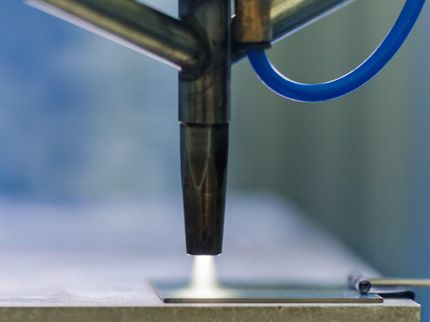The toxicity of antimicrobial silver in products can be reduced
Chemists at the University of Helsinki have managed to manufacture new polymer-stabilised silver nanoparticles. The result is significant because the antimicrobial characteristics of silver are used in textiles, floor coatings and paints even though the impact on health of silver nanoparticles are not entirely known. Finnish researchers now think that exposure to silver can be reduced by chemically binding the nanoparticles to polymers. The research results will soon be published in a leading journal in the field, Colloid and Polymer Science .
Nanoparticles are a topic of debate both in research and everyday life. The antimicrobial characteristics of silver, on the other hand, have been well-known for a long time and it has numerous commercial applications. Supermarkets carry an abundance of products with added silver or silver nanoparticles. These include antimicrobial textiles, containers, shower curtains, tabletops, floor coatings, paints and glues. Colloidal silver water for internal use as well as creams and deodorants, and even wound dressing products, containing silver that are used externally are also available.
In the US, the registration of new insecticides containing silver nanoparticles has raised debate about their safety. The question can be justifiably asked as to whether conclusions on the toxicity of silver nanoparticles can be drawn on the basis of earlier safety information on the toxicity of silver ions and metallic silver (1).
The method developed at the University of Helsinki is a solution to reducing the toxicity of silver. Nanoparticles can be manufactured through various methods that are based on reducing metallic salts, in this case silver nitrate, in the presence of a stabilising compound. Polymer-stabilised silver nanoparticles have been successfully manufactured at the Laboratory of Polymer Chemistry at the University of Helsinki. The work has exploited the laboratory's prior experience with gold nanoparticles and the expertise of the School of Science and Technology of the Aalto University and its European cooperation partners.
In Helsinki, the stabilising component used in the manufacturing process is a polymer with a reactive thiol end group. It is known that thiol groups bind effectively with silver, which enables the effective colloidal stabilisation of silver nanoparticles and binding to polymers. The polymer is in itself a soft, rubber-like acrylate, which contains a water-soluble block that enables silver ions to be released from the otherwise hydrophobic coating. The idea is that these silver nanoparticles could be used as a coating or its component.
Many mechanisms relating to the toxicity of silver to micro-organisms have been put forward. It has been demonstrated that silver ions react in cells with the thiol groups of proteins. There is also evidence to show that silver ions damage DNA by inhibiting its replication. Silver's ability to form extremely sparingly soluble salts is also considered one of its impact mechanisms. When the chloride ions precipitate as silver chloride from the cytoplasm of cells, cell respiration is inhibited. The antibacterial efficiency of silver nanoparticles is also well-known, especially against Gram-negative bacteria such as E.coli. The silver nanoparticles work by releasing silver ions and by penetrating cells.
Silver, silver ions and silver nanoparticles have generally been considered to be quite harmless to people. However, the most recent research has demonstrated that nanoparticles also penetrate mammalian cells and damage the genotype. There is even evidence to suggest that silver nanoparticles may actively find their way into cells through endocytosis. Inside the cell, hydrogen peroxide formed in cell respiration oxidises silver nanoparticles and releases silver ions from them, consequently increasing the toxicity. Thus, it can even be assumed that silver nanoparticles are cyto- or genotoxic. Moreover, it has been demonstrated that silver nanoparticles penetrate the skin via pores and glands. If the skin is damaged, this facilitates the penetration of silver particles through the skin.
It is therefore important that coatings containing silver nanoparticles do not release nanoparticles. According to Finnish researchers, the effect of the coating should only be based on silver ions dissolving from them. Consequently, nanoparticles should be as well bound to the coating as possible, enabling a reduction in the possible exposure to silver nanoparticles.
































































